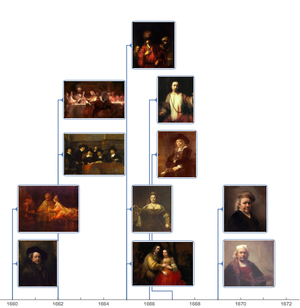Revisions of Physical Constants
While the physical constants are (thought to be) constant over time, their best-known values change with new measurements and experiments. This example shows how the best values of the Newton's constant  and Planck's constant
and Planck's constant  have changed since 2006.
have changed since 2006.
"PhysicalConstant" entities tabulate historically measured values as well as the current "best" (or defined) value, as illustrated here for the Newtonian constant of gravitation  .
.
The gravitational constant is one of the least precisely known fundamental constants. In fact, as stated in the motivation for NIST's Measuring "Big G" Challenge, "As shown above, we do not understand either the physics behind gravitation, or the physics used in the instruments used to perform these measurements, or both."
Now examine how the measured value of  has improved over time. First, extract the various measurements from the "Values" property, keeping only those with an associated date.
has improved over time. First, extract the various measurements from the "Values" property, keeping only those with an associated date.
Now combine the values with their associated uncertainties, subtract the average magnitude of measured values and plot with error bars and labels.
Happily, with the advent of some very recent measurements in the last few years, the precision to which  is known has been improving.
is known has been improving.
The situation is much better for Planck's constant  .
.
In fact, the measurement for  is sufficiently precise that it has been chosen as one of the constants whose value became exact (when measured in SI units) as part of the 2019 revision of SI.
is sufficiently precise that it has been chosen as one of the constants whose value became exact (when measured in SI units) as part of the 2019 revision of SI.
Assembling and plotting the historically measured values for  relative to the so-called "conventional Planck constant value"
relative to the so-called "conventional Planck constant value"  clearly shows the steady progress of experimental measurement of
clearly shows the steady progress of experimental measurement of  over the last decade.
over the last decade.
Somewhat counterintuitively, while the precision of measurements of  will continue to improve now that the 2019 SI revision has gone into effect, its value will henceforth be set in stone and instead the value of the joule will change.
will continue to improve now that the 2019 SI revision has gone into effect, its value will henceforth be set in stone and instead the value of the joule will change.


























